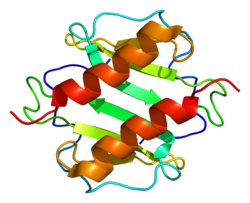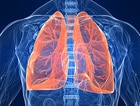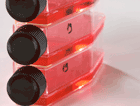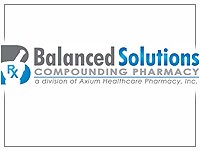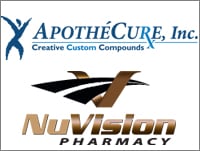1. DO YOU KNOW WHY YOU DIE AFTER A LARGE STROKE? IT IS BECAUSE OF THE NOTCH PATHWAY. (The notch commend the electrical impulse that can tell the brain to quit all together, it can send the message that this is too much ABORT!)
2. DO YOU KNOW WHY YOU DIE AFTER A HEART ATTACK? IT IS BECAUSE OF THE NOTCH PATHWAY (send message ABORT to cardiac electricity)
3. DO YOU KNOW WHY YOU HAVE A GOOD MEMORY? IT IS BECAUSE OF THE NOTCH PATHWAY. (Notch allow memory to form on thing it is able to transmit to other cell)
4. DO YOU KNOW WHY YOU GET DEMENTIA (ALZHEIMER OR NOT) ? BECAUSE OF THE NOTCH PATHWAY (memory of old things already made "accepted" (consensus) are the last to disappear )
5. DO YOU SEE SOMEONE (EVEN A PRESIDENT) PASS OUT AND WONDER WHY? BECAUSE OF THE NOTCH PATHWAY (Notch "abort" message was triggered may be through vaso-vagal nerve!)
6. DO YOU KNOW WHY AN INFECTION CAN KILL YOU, AND WHY? BECAUSE OF THE NOTCH (proximity of the notch with TNF which in excess kills you even in the best hospitals in the world, there no defense against massive liberation of TNF)
7. SOMEONE WALKING AND SMILING DROPS DEAD, THE NOTCH DID IT! ALL OTHER ORGANS CAN BE GOOD, IN FACT WE TAKE THEM FOR TRANSPLANT, BUT THE NOTCH DID IT (ABORT! message was sent)
8. CAR ACCIDENT DEATH, THE NOTCH....JUST FINISH THE PHRASE FOR ME (Abort!)
9. MACROPHAGE DESTROY OTHER CELLS BY EATING THEM, THE NOTCH TELL THEM TO DO SO (Notch is involved with endophage, and vacuole formation)
10. WHY IMMUNIZATION WORKS, THE NOTCH DID IT (memory of the biologic agent-aggressor is kept because of ....)
WHY WE AGREE ON BASIC THINGS , THE NOTCH DID THAT (we remember what make sense to all)
WHY WE STAND AND BELIEVE IN FUNDAMENTAL HUMAN RIGHTS, SOMEWHERE IN US WE REMEMBER WHAT IS RIGHT, WELL THE NOTCH DID THAT!
WHY AN ORGAN STOP AND ANOTHER START, THE NOTCH PLAYS HERE (Notch is at the transition of proliferation and differentiation this is where Numb comes in!)
WHY CERTAIN TYPES OF CANCER ARE REFRACTORY TO CANCER KILLING DRUGS NO MATTER WHAT, THE NOTCH DOES THAT TOO. IT'S AS IF THEY "REMEMBER" TO BE REFRACTORY
WHY CERTAIN TISSUES HAVE A FUNCTION AND NOT ANOTHER, THE NOTCH DID IT
WHY HORMONES ARE SECRETED BY SOME ORGAN NO MATTER WHERE THEY ARE, THE NOTCH (keep remember what they are about!)
WHY AVASTIN STOPS WORKING AND ALL THE CANCERS KNOW HOW TO RESIST (BY VEGFR2)
LADIES AND GENTLEMEN, THIS IS NOTCH PATHWAY IS THE SECRET OF LIFE!
PLAY WITH THE NOTCH, YOU WILL STOP BREATHING, AND YOUR HEART WILL STOP, YOUR EYES WILL STOP SEEING, AND YOU CAN'T READ ME......
VEGETATIVE LIFE IS DUE TO THE NOTCH!
why basket ball player drops dead, drug overdose- it's all in the notch!
Resuscitation and resurrection, the NOTCH again!
BY DETERMINING CELLULAR FATE, IT IS THE CONDUCTOR OF THE ORCHESTRA .

